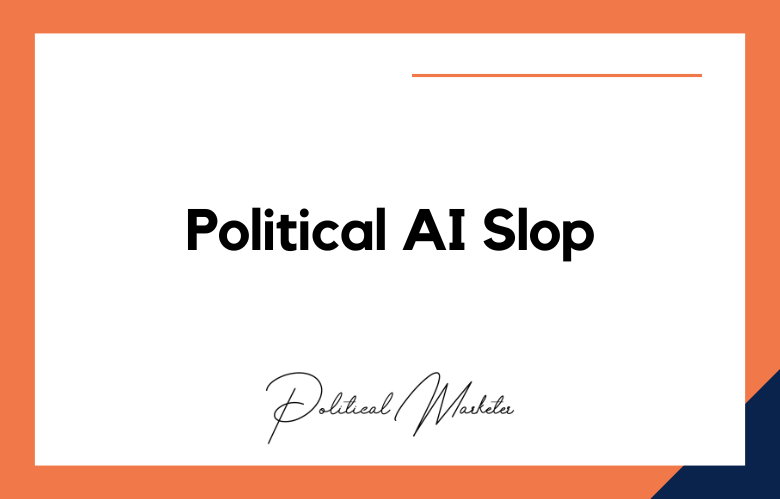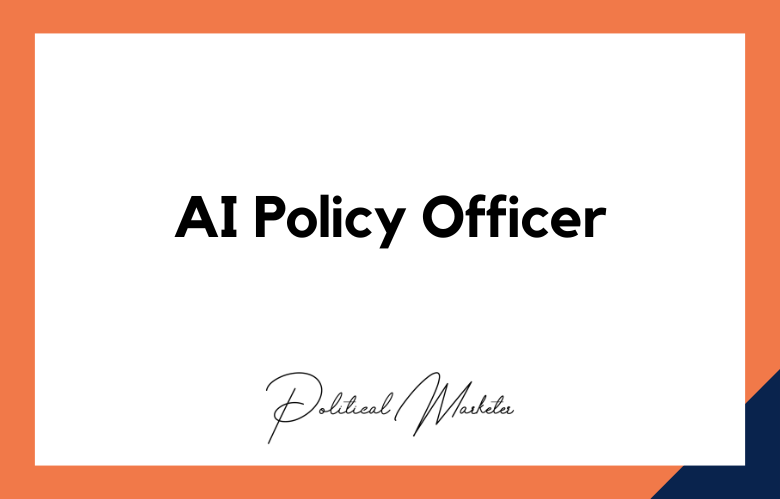Politics is a complicated landscape filled with the competing interests of countless individuals and organizations. Making decisions that balance competing and often contradictory interests requires a comprehensive analysis of large amounts of data, identifying key factors, and weighing potential outcomes.
Politicians and policymakers increasingly use AI and machine learning tools to assist with this complex task. AI and machine learning make it possible to analyze vast amounts of data and identify patterns that would be impossible for humans to do effectively. This includes identifying key factors that may impact the success or failure of policy decisions.
For example, by using machine learning algorithms to analyze demographic data, policymakers can identify patterns related to attitudes toward issues such as taxation, healthcare, and education.
These insights can help policymakers develop proposals that account for competing demographic interests. Additionally, machine learning algorithms can continuously monitor the progress of policies over time, identifying trends and providing insights into how policies can be improved.
The Impact of AI and Machine Learning on US Politics
In recent years, the impact of artificial intelligence (AI) and machine learning (ML) has been growing exponentially, not just in the tech industry but in various sectors, including US politics.
With the help of AI and ML, politicians and political parties are tapping into the power of data analytics to gain insights into voter behavior, preferences, and trends. These insights are being used to shape campaign strategies, craft messages, and even predict the outcomes of political campaigns.
One of the significant ways AI and ML are being used in US politics is through the analysis of social media data.
Social media platforms have become a powerful tool for political parties and candidates to engage with voters. AI is used to process large amounts of data generated by social media users.
This data is analyzed to understand the demographics of social media users, behavior, and even the sentiment of social media conversations. Political campaigns have been using this information to target their messaging and advertising better to reach specific audiences and demographics.
How AI and Machine Learning are Shaping Political Decision-Making
Artificial Intelligence (AI) and Machine Learning (ML) are rapidly transforming various dimensions of our lives. These technologies have made significant progress in the political sphere in recent years and are gradually shaping political decision-making processes.
One of the most prominent contributions of AI and ML to political decision-making has been the ability to analyze massive amounts of data.
With the help of these technologies, politicians can now access a vast array of information and insights about their constituents’ preferences, behaviors, and attitudes. This is crucial in understanding public sentiment and designing policies that align with the citizens’ needs.
The Growing Influence of AI and Machine Learning in Politics
Over the years, artificial intelligence (AI) and machine learning (ML) capabilities have been slowly creeping into various fields and industries, with politics being one of the latest ones to be influenced by these technological advancements.
As a result, there is a growing interest in the intersection of AI and politics, with many political actors, institutions, and organizations embracing these technologies to improve decision-making, campaign strategies, electoral processes, and public policy.
One of the most prominent applications of AI and ML in politics is using big data analytics to understand voter behavior better and target it.
Political campaigns, for example, can leverage AI-powered tools to gather and analyze vast amounts of data from social media, voter records, and other sources to create more personalized and compelling messaging.
This involves using algorithms and predictive models to identify patterns, preferences, and sentiments among voters and tailoring messages and outreach efforts accordingly.
Exploring the Role of AI and Machine Learning in Political Campaigns
Political campaigns have been integral to modern democratic societies since their inception. With the advent of technology, political campaigns have evolved with social media, extensive data analysis, and targeted advertising.
However, one of the most significant technological advances that have changed the political landscape is the increasing use of artificial intelligence (AI) and machine learning.
AI and machine learning algorithms are used to perform predictive analytics, sentiment analysis, and natural language processing on vast amounts of data generated by social media platforms, polling data, and other sources.
Consequently, campaigns use the insights derived from this analysis to inform their strategies, target specific demographics, and craft tailored messages.
AI and Machine Learning: Transforming the Political Landscape
Artificial Intelligence (AI) and Machine Learning are revolutionizing the world, and the political landscape is no exception.
The power of these technologies to analyze large amounts of data at high speed and accuracy is unprecedented. They can help politicians and political parties understand their target audience better, create effective campaigns and policies, and mobilize support.
One key area where AI and Machine Learning are transforming the political landscape is campaign strategy. With the help of AI, politicians can access real-time data on voter preferences, attitudes, and behavior, allowing them to design more targeted and effective campaign messages.
Machine learning algorithms can analyze voter data and use this information to predict voting patterns and preferences, making it easier for politicians to craft messages that resonate with their target audience.
The Evolution of Technology in Political Engagement
Throughout history, technology has played a significant role in how people engage in politics. From the printing press to social media, various technologies have emerged and transformed how individuals participate in political discourse, shape public opinion, and influence decision-making processes.
The printing press, invented in the 15th century, marked a significant turning point in political engagement.
It allowed for the mass production of books, pamphlets, and newspapers, making information more accessible to the general public. This accessibility paved the way for increased political engagement, as citizens could freely discuss and debate issues.
Leveraging AI and Machine Learning for Political Messaging
Artificial intelligence and machine learning in politics have gained momentum over the past few years.
It has become increasingly clear that these technologies have the potential to revolutionize the political landscape by providing more precise and effective political messaging.
AI and machine learning can be used to analyze vast amounts of data and identify patterns that humans might not detect. This allows political campaigns to create more targeted messaging that resonates with specific groups of voters based on their demographics and other characteristics.
For example, machine learning algorithms can analyze social media posts, search queries, and other online behavior to identify the issues that matter most to specific groups of voters. This data can then tailor political messaging to those groups, ensuring that candidates present themselves in the most favorable light.
The Benefits and Risks of AI in Political Campaigns
Improved Targeting
Artificial intelligence (AI) can be used to improve the targeting of political messages, allowing campaigns to reach more people with their message.
AI can analyze large amounts of data and identify patterns that may not be obvious to the human eye. This can help campaigns target specific demographics or groups based on their interests, beliefs, and values.
Increased Efficiency
AI can also help campaigns become more efficient by automating tasks such as creating ads, scheduling posts, and managing email lists. This can free up time for campaign staff to focus on other tasks such as fundraising or developing strategy.
Increased Engagement
AI can also increase engagement with potential voters by using natural language processing (NLP) technology to respond to real-time questions or comments. Additionally, AI-powered chatbots can interact with users on social media platforms like Twitter and Facebook.
Personalization
AI can also enable campaigns to personalize communications with potential voters by analyzing data about them and tailoring messages accordingly.
For example, a campaign could use AI to determine a person’s interests and then send them content related to them to increase engagement with the message.
Risk of Misinformation
One of the risks of using AI in political campaigns is that it could spread misinformation or false information intended to influence public opinion or sway an election outcome.
AI-generated content has been shown in some cases to be difficult for humans to distinguish from authentic content generated by humans, which means it could easily be used for malicious purposes, such as spreading false information about a candidate or issue.
Privacy Concerns
Another risk of using AI in political campaigns is that it could lead to privacy concerns without proper safeguards.
For example, if a campaign could access personal data about individuals without their consent, it could lead to serious privacy issues for those individuals and potential legal problems for the movement itself.
Lack of Transparency
The use of AI in political campaigns also raises concerns around transparency, as it is often difficult for humans to understand how algorithms are making decisions and what data they are using when making those decisions.
This lack of transparency makes it difficult for citizens and regulators alike to hold campaigns accountable for any potential misuse of AI technology or data breaches that may occur due to its use.
Bias Issues
Finally, there is also the risk that AI algorithms used by political campaigns may contain bias, which could lead them astray from their stated goals or even have unintended consequences that harm specific populations or groups of people unfairly due to their use.
Fighting Fake News and Disinformation with AI and ML
The proliferation of fake news and disinformation has become a significant issue in our society today, threatening the integrity of our democratic institutions, disrupting social cohesion, and causing substantial harm to individuals and communities.
To combat this growing threat, researchers and technologists have turned to the power of Artificial Intelligence (AI) and Machine Learning (ML) to help detect and filter out false information.
AI and ML technologies identify patterns, collect data, and analyze news stories to determine their credibility. By researching large datasets of news sources, these technologies can detect patterns in content, language, and germs that can help identify what is likely to be fake news or disinformation.
The Role of AI and Machine Learning in Voter Education
Artificial intelligence (AI) and machine learning (ML) have revolutionized our lives, including how we communicate, work, and interact with technology.
Technology advances and is now being leveraged to improve voter education and civic engagement. With the upcoming elections across the globe, the role of AI and ML in voter education has become more crucial than ever before.
Traditionally, voter education has relied heavily on traditional media outlets, such as television, radio, and print. However, technology has opened up new avenues for voter education and engagement.
AI and ML-powered algorithms have the potential to provide tailored content to individual voters based on their interests, demographics, and historical voting patterns.
By analyzing data sets of previous election results, AI and ML algorithms can identify potential voter trends and use this information to improve voter engagement and education.
Conclusion:
AI and machine learning offer vast potential for policymakers and political leaders to make more informed and data-driven decisions that balance competing interests and align with overall societal objectives.
The power of these technologies to analyze large amounts of data, identify patterns, simulate various scenarios, and eliminate individual biases is invaluable in navigating the complex landscape of politics and public policy development.
By embracing the potential of AI and machine learning as strategic tools, policymakers can build better societies that support development, equity, and prosperity for all.
AI and machine learning are becoming increasingly prominent in political decision-making processes.
Integrating technology into politics has enabled us to analyze large amounts of data and make informed decisions that could have lasting impacts.
Data-driven decision-making, predictive analysis, monitoring and surveillance, constituent services, and cybersecurity and defense are all areas in which AI and machine learning can be influential.
As technology continues to evolve, politics will continue to transform, and we’ll see a more significant impact of AI and machine learning in politics in the future.
Call: +91 9848321284
Email: [email protected]
Frequently Asked Questions (FAQs)
What is the role of AI in political decision-making?
AI supports political decision-making by analyzing large datasets, forecasting outcomes, detecting trends, and offering data-driven policy recommendations.
How does machine learning improve political forecasting?
Machine learning models can predict election outcomes, voter behavior, and policy impacts based on historical and real-time data patterns.
Can AI help in public opinion analysis?
AI can analyze social media, news articles, and survey data to gauge public sentiment, identify concerns, and monitor narrative shifts.
What kind of data does AI use in political contexts?
AI leverages voter records, demographic data, behavioral signals, economic indicators, and social media activity to drive insights.
How are chatbots used in political campaigns or governance?
Chatbots assist in voter queries, policy explanations, registration guidance, and constituent engagement, especially during elections.
What are the ethical concerns of using AI in politics?
Concerns include data privacy, algorithmic bias, lack of transparency, manipulation risks, and potential misuse in voter targeting.
How does AI impact policymaking?
AI can simulate policy outcomes, evaluate alternatives, and offer evidence-based recommendations to lawmakers for more informed governance.
Can AI reduce human bias in political decisions?
AI can neutralize certain biases when designed correctly, but poorly trained models may amplify or institutionalize hidden biases.
How is AI used in political risk assessment?
AI evaluates geopolitical scenarios, conflict likelihoods, public unrest, and economic instability to help governments and political analysts prepare responses.
What role does AI play in combating fake news and misinformation?
AI tools detect deepfakes, identify misleading headlines, and flag suspicious content patterns to help safeguard political discourse.
How does AI assist in resource allocation for political campaigns?
AI helps optimize spending across platforms, regions, and voter segments by predicting which strategies yield the highest returns.
Are political parties using AI for micro-targeting?
AI enables micro-targeted messaging by clustering voters based on interests, values, and behaviors for personalized outreach.
Can AI influence legislative strategy?
AI models can identify voting patterns, legislative alliances, and optimal times to introduce or support bills based on predicted outcomes.
Is AI being used in civic planning and governance?
Innovative governance systems use AI to analyze urban data, optimize traffic, manage utilities, and allocate budgets more efficiently.
How do governments use machine learning in surveillance and security?
Machine learning powers facial recognition, anomaly detection, predictive policing, and border monitoring systems in various countries.
Can AI improve public service delivery?
AI helps streamline bureaucratic processes, reduce wait times, automate form processing, and improve citizen satisfaction in services.
What are examples of AI use in global political systems?
Countries like Estonia, Singapore, and the UK have deployed AI in digital ID systems, policy modeling, and citizen service platforms.
Does AI play a role in international diplomacy?
Emerging uses include AI-powered negotiation simulators, treaty data analysis, and language translation for real-time diplomatic communication.
Can machine learning be used to predict voter turnout?
Models can forecast turnout rates by analyzing historical data, registration activity, weather, news sentiment, and social signals.
What is the future of AI in political decision-making?
AI will increasingly serve as an advisor in governance, offering real-time insights, optimizing strategies, and transforming policymaking through automation and prediction.










